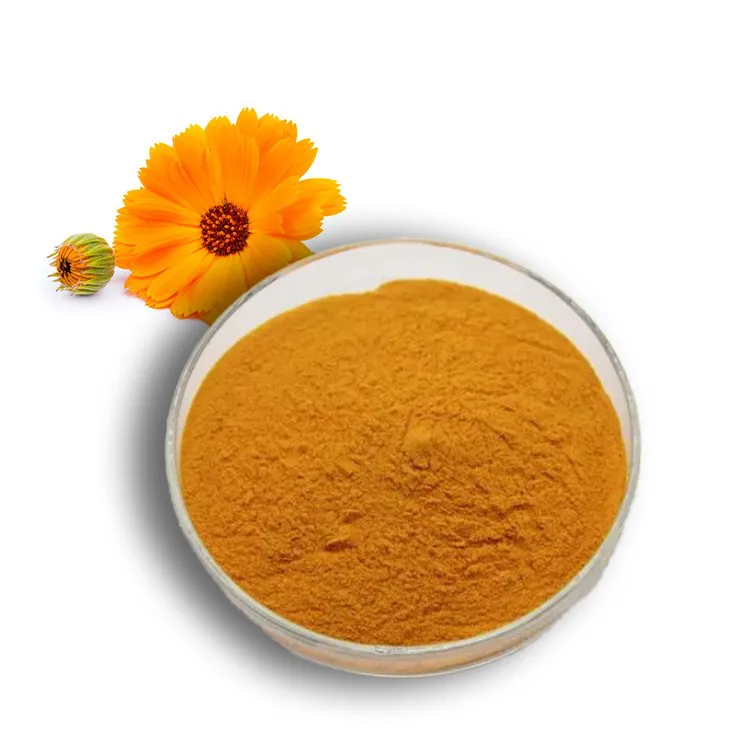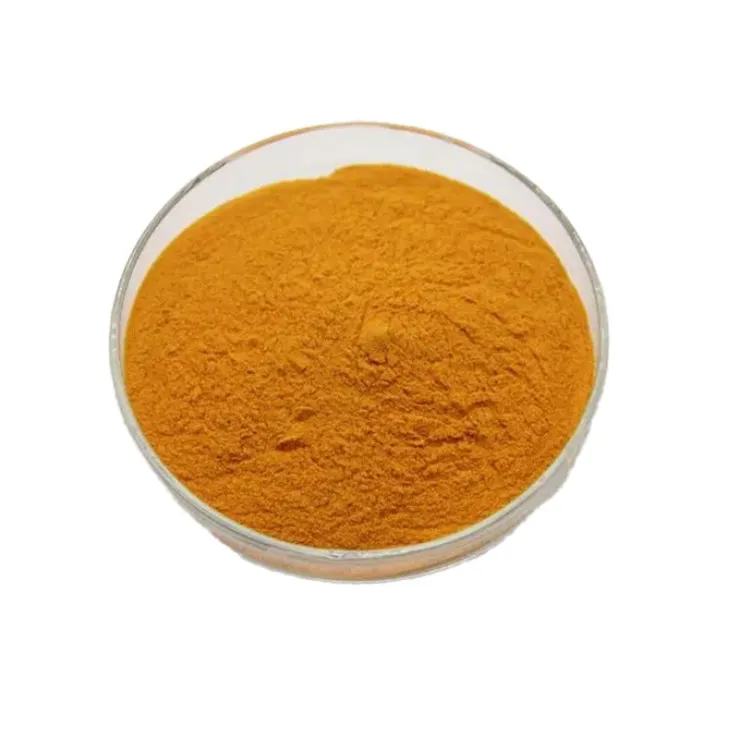- 0086-571-85302990
- sales@greenskybio.com
The Best Calendula Extract in 2024.
2024-11-29

Introduction
As we step into 2024, the demand for Calendula Extract has been on a significant rise. Calendula, with its numerous potential health benefits and versatile applications in skincare, haircare, and traditional medicine, has captured the attention of consumers and industries alike. However, with a plethora of options available in the market, determining the best Calendula Extract can be a daunting task. This article aims to provide a comprehensive analysis to help consumers make an informed decision.

1. Organic vs Non - Organic Calendula Sources
1.1 Organic Calendula
Organic calendula is grown without the use of synthetic pesticides, fertilizers, or genetically modified organisms (GMOs). This has several advantages. Firstly, it reduces the risk of chemical residues in the extract, which is of particular importance for those using calendula in skincare or for internal consumption. Organic farming practices also tend to be more sustainable, promoting soil health and biodiversity. For example, in organic calendula farms, natural pest control methods such as companion planting are often employed. Marigolds, which are related to calendula, can be planted alongside to repel certain pests.
Moreover, many consumers believe that organic calendula may have a higher nutritional and therapeutic value. While scientific evidence on this is still being explored, the idea is that plants grown in a more natural environment without chemical interference may develop a more complex and beneficial chemical profile. However, organic calendula may be more expensive due to the higher costs associated with organic farming and certification.
1.2 Non - Organic Calendula
Non - organic calendula, on the other hand, is grown using conventional farming methods. This can result in higher yields and potentially lower costs. In some cases, non - organic farming may use pesticides and fertilizers to protect the plants from pests and diseases and to enhance growth. While these chemicals are regulated, there is still a concern about potential residues in the extract. However, modern agricultural technologies are constantly improving to minimize such risks. For example, precision farming techniques can ensure that pesticides are applied only when and where they are needed, reducing overall chemical use.

2. Modern Extraction Technologies and Quality Enhancement
2.1 Supercritical Fluid Extraction
Supercritical fluid extraction (SFE) is one of the advanced techniques used for Calendula Extraction. In this method, a supercritical fluid, usually carbon dioxide, is used as the solvent. The advantage of SFE is that it can operate at relatively low temperatures, which helps to preserve the delicate bioactive compounds in calendula. For example, calendula contains flavonoids, triterpenoids, and carotenoids, which are sensitive to high temperatures. SFE can extract these compounds without significant degradation, resulting in a higher - quality extract with more potent biological activity.
Another benefit of SFE is its selectivity. By adjusting the pressure and temperature of the supercritical fluid, it is possible to target specific compounds in the calendula plant. This allows for the production of extracts with a more defined chemical composition, which can be tailored for specific applications such as anti - inflammatory skincare products or antioxidant - rich dietary supplements.
2.2 Solvent Extraction
Solvent extraction is a more traditional method, but it has also evolved over the years. Commonly used solvents include ethanol, methanol, and hexane. Ethanol extraction, for instance, is popular because it is relatively safe and can effectively extract a wide range of compounds from calendula. However, the choice of solvent can affect the final quality of the extract. For example, hexane is a non - polar solvent that may be better for extracting non - polar compounds such as lipids, while ethanol can extract both polar and non - polar compounds.
Modern solvent extraction techniques often incorporate purification steps to remove impurities and residual solvents. This is crucial as residual solvents can be harmful if present in significant amounts in the final extract. High - quality solvent - extracted calendula products will have undergone thorough purification processes to ensure safety and efficacy.

3. Environmental Factors Affecting Calendula Extract
3.1 Climate and Geographic Location
The climate and geographic location where calendula is grown can have a significant impact on the quality of the extract. Calendula thrives in sunny and well - drained soil conditions. In regions with the right climate, such as Mediterranean - type climates, calendula plants may produce a higher concentration of bioactive compounds. For example, the longer sunlight exposure in these regions can stimulate the production of flavonoids, which are important for the antioxidant properties of calendula.
Geographical location also affects soil composition. Different soils contain varying levels of nutrients, minerals, and trace elements. Calendula grown in nutrient - rich soils may have a more robust chemical profile. For instance, soils rich in potassium may promote the growth of calendula plants and enhance the production of certain compounds.
3.2 Pollution and Environmental Stress
Pollution in the growing environment can be detrimental to calendula plants and, consequently, the extract. Air pollution, such as high levels of sulfur dioxide or particulate matter, can damage the leaves and flowers of calendula, affecting the biosynthesis of bioactive compounds. Water pollution is also a concern, especially if the calendula is irrigated with contaminated water. Pollutants in the water can be absorbed by the plants and may end up in the extract.
Environmental stress, such as drought or extreme temperatures, can also influence the quality of calendula. Drought - stressed calendula plants may produce different levels of secondary metabolites compared to well - watered plants. These changes in metabolite production can affect the therapeutic properties of the extract.

4. Comparison of Different Brands and Products
4.1 Brand A: Calendula Skincare Line
Brand A offers a range of calendula - based skincare products. Their calendula extract is sourced from organic farms, which is a plus for consumers concerned about chemical residues. The extraction method used by Brand A is a combination of supercritical fluid extraction and solvent extraction. This dual - approach allows them to capture a wide range of bioactive compounds. Their products are known for their effectiveness in treating skin irritations, such as eczema and psoriasis. The brand also emphasizes sustainability in its packaging, using recyclable materials.
4.2 Brand B: Calendula Dietary Supplements
Brand B focuses on calendula dietary supplements. Their calendula extract is obtained from non - organic sources, but they claim to use strict quality control measures to ensure the absence of pesticide residues. The extraction process is mainly solvent - based, with a purification step to remove any potential solvents. These supplements are marketed for their antioxidant and anti - inflammatory properties. They are available in different forms, such as capsules and tinctures, to suit different consumer preferences.
4.3 Brand C: Calendula Haircare Products
Brand C's calendula haircare products are formulated with a calendula extract that is sourced from a specific region known for its high - quality calendula production. The brand uses a traditional solvent extraction method but has optimized it to preserve the natural properties of the extract. Their haircare products, such as shampoos and conditioners, are popular for promoting hair growth and improving scalp health. They also conduct regular quality tests to ensure the consistency of their products.
Conclusion
In conclusion, the best calendula extract in 2024 is defined by a combination of factors. The source of the calendula, whether organic or non - organic, plays a role, with organic sources having certain advantages in terms of purity and potential health benefits. Modern extraction technologies, such as supercritical fluid extraction and advanced solvent extraction methods, are crucial for enhancing the quality of the extract. Environmental factors, including climate, soil, pollution, and stress, also impact the quality of calendula and its extract. When comparing different brands and products, consumers should consider factors such as the source of the extract, the extraction method, and the intended use of the product. By taking all these factors into account, consumers can make a more informed choice when selecting a calendula extract product in 2024.
FAQ:
What are the main differences between organic and non - organic calendula extracts?
Organic calendula extracts are derived from calendula plants that are grown without the use of synthetic pesticides, fertilizers, or genetically modified organisms (GMOs). This can result in a purer extract with fewer chemical residues. Non - organic sources may use these substances, which could potentially introduce unwanted chemicals into the extract. Organic calendula is also often considered more environmentally friendly. However, non - organic calendula extracts may be more readily available and sometimes less expensive.
How do modern extraction technologies improve the quality of calendula extract?
Modern extraction technologies, such as supercritical fluid extraction and ultrasonic extraction, can enhance the quality of calendula extract in several ways. Supercritical fluid extraction uses substances like carbon dioxide at a supercritical state to extract the active compounds from calendula more selectively. This can result in a higher concentration of beneficial compounds, such as flavonoids and triterpenoids. Ultrasonic extraction uses ultrasonic waves to break down the plant cells more efficiently, which can increase the yield of the extract and also preserve the integrity of the active components.
What environmental factors can affect the quality of calendula extract?
The quality of calendula extract can be influenced by environmental factors such as soil quality, climate, and altitude. Calendula plants grown in rich, well - drained soil with the right nutrient balance are likely to produce higher - quality extracts. A stable climate without extreme temperature fluctuations or excessive rainfall can also contribute to healthy plant growth and better - quality extracts. Higher - altitude regions may have different environmental conditions that can affect the chemical composition of the calendula, potentially leading to differences in the extract's properties.
How can one compare different brands of calendula extract products?
When comparing different brands of calendula extract products, several factors should be considered. Firstly, look at the source of the calendula. Is it organic? Secondly, check the extraction method used. Thirdly, examine the concentration of active ingredients listed on the label. Also, consider customer reviews and ratings, as these can provide insights into the product's effectiveness. Additionally, look for any certifications or quality assurances that the brand may have. Some brands may also conduct third - party testing, which can be a sign of a reliable product.
What are the potential benefits of using the best calendula extract?
The best calendula extract can offer several potential benefits. It has anti - inflammatory properties, which can be beneficial for skin conditions such as eczema and dermatitis. It may also have antioxidant effects, helping to protect the skin from free radical damage. Calendula extract can be used in skincare products to soothe and moisturize the skin. In addition, it has been used in traditional medicine for its antibacterial properties and may have potential applications in wound healing.
Related literature
- The Advances in Calendula Extract Production and Its Applications"
- "Organic vs Non - organic Calendula: A Comparative Study of Extract Quality"
- "Environmental Impact on Calendula Extract Composition"
- ▶ Hesperidin
- ▶ citrus bioflavonoids
- ▶ plant extract
- ▶ lycopene
- ▶ Diosmin
- ▶ Grape seed extract
- ▶ Sea buckthorn Juice Powder
- ▶ Beetroot powder
- ▶ Hops Extract
- ▶ Artichoke Extract
- ▶ Reishi mushroom extract
- ▶ Astaxanthin
- ▶ Green Tea Extract
- ▶ Curcumin Extract
- ▶ Horse Chestnut Extract
- ▶ Other Problems
- ▶ Boswellia Serrata Extract
- ▶ Resveratrol Extract
- ▶ Marigold Extract
- ▶ Grape Leaf Extract
- ▶ blog3
- ▶ Aminolevulinic acid
- ▶ Cranberry Extract
-
The best lemon juice powder in nature.
2024-11-29
-
Organic Vitamin K2 Powder Suppliers
2024-11-29
-
Bulk purchase of L - tyrosine.
2024-11-29
-
Vitamin K2 Manufacturers
2024-11-29
-
Avocado Extract Powder
2024-11-29
-
Maca Extract
2024-11-29
-
Apricot Powder
2024-11-29
-
Artichoke Leaf Extract
2024-11-29
-
Almond Extract Powder
2024-11-29
-
Epimedium extract powder
2024-11-29
-
Soy Extract
2024-11-29
-
Cocoa Extract
2024-11-29
-
Tongkat Ali Extract Powder
2024-11-29
-
Curcuma Longa Extract
2024-11-29























